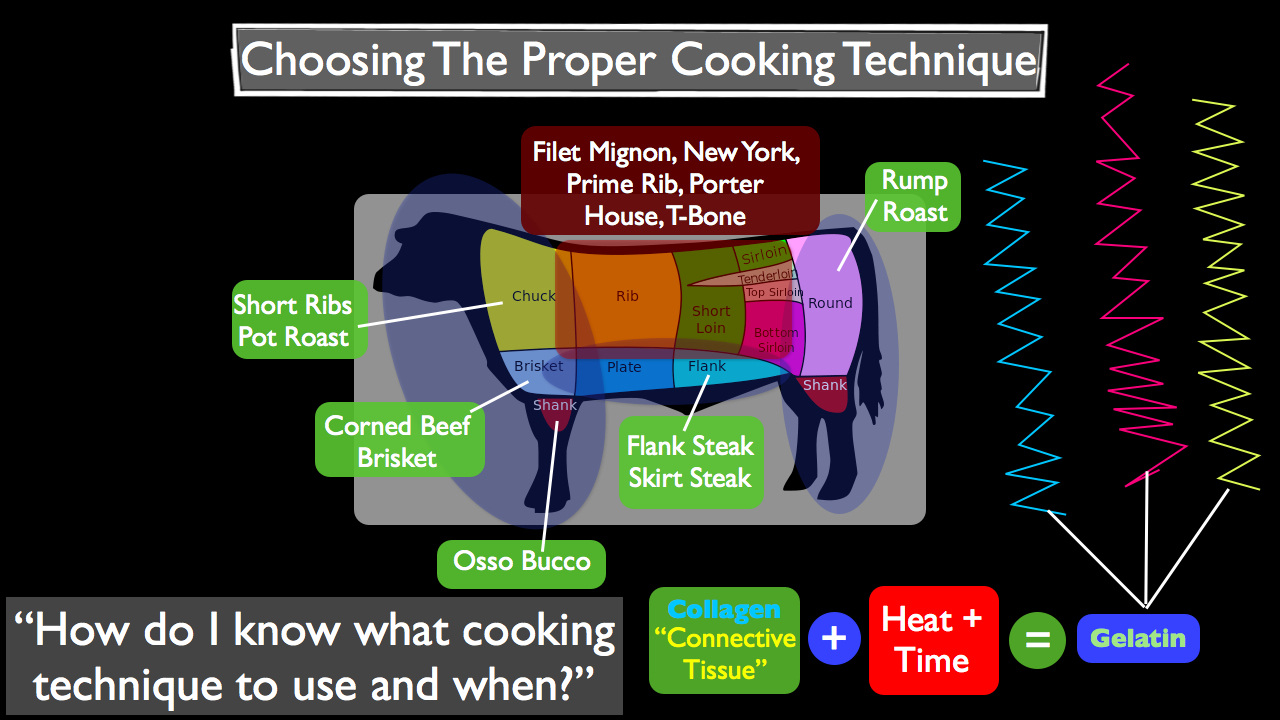The most important decision one can make in their kitchen is which methods of cooking to apply to any given product. It doesn't matter how expertly a cooking technique is executed, if it's the wrong technique for the end product, you'll never achieve a good result. For example, you would never braise a filet mignon or steam a beef short rib. Understanding how different cuts of meat or even vegetables react to heat and time will allow you to make an informed decision, choosing the best method of cooking to apply; an understanding which is the very foundation of the culinary arts.

The best way to choose a cooking method is to start with the product you want to cook. If it's a protein, you must ask yourself this one question; "is this a tough cut of meat, or a tender cut." Generally speaking, a tough cut of meat will be cooked using a "low and slow" method, which is necessary to break down the chewy connective tissue "collagen." Yet if a tender cut of meat is cooked using a "slow style" method, it will almost always dry out, turning a once tender cut into shoe leather.

Related Resources
There are 4 Comments
Thanks Again
Professor Burton!
Great job putting everything into perspective.

Thanks Elliot. Glad you
Thanks Elliot. Glad you enjoyed the video.
Fast/Moist
Very nicely done video. I just have one addition to make. For the Fast/Moist category you remarked that one usually won't find boiled/simmered meat turning out well.
A very traditional Austrian recipe calls for simmering beef (the cap of the rump). I think in English it's then called "soured boiled rump" in Austria it would be "Tafelspitz". It's normally server with roast potatoes, horseradish bread sauce, horseradish apple sauce and maybe some other condiments (as well as the vegetables that were boiled with the meat).
Not meant as a criticism, it's clear that you can't talk about every crazy dish that there is, just as a pointer for those that are interested.

Great point. There are
Great point. There are classic dishes that do call for boiling meat. In fact, almost every cultural, ethnic or regional cuisine has at least one peasant dish that calls for boiling or simmering meat. And when prepared with care, it can come out good as a complete dish, but gentler and lower temperatures below that of boiling will always yield a better end product.
